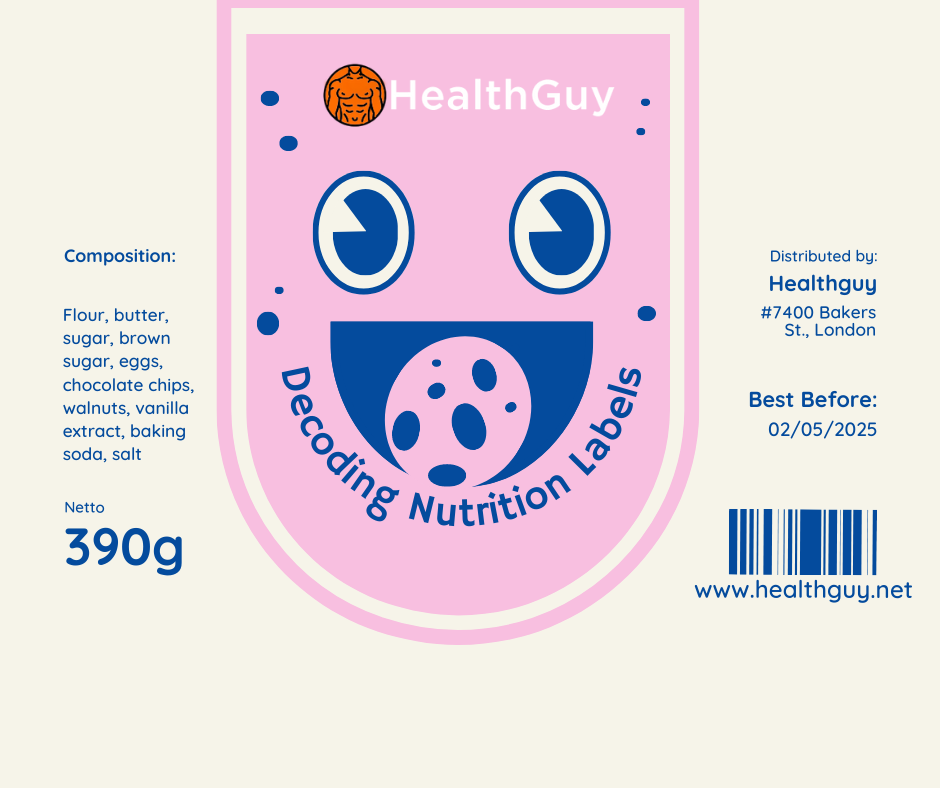
Decoding Nutrition Labels: The Key to Making Healthier Food Choices
Nutrition labels are a standardized way of displaying the nutritional content of food products. They are designed to help consumers make informed choices about the foods they eat by providing information on the calorie content, macronutrient content (fats, carbohydrates, and protein), as well as micronutrients (vitamins and minerals) and other important dietary components such as fibre and sodium.
Here is a more detailed and elaborative guide to understanding nutrition labels:
- Serving Size: The serving size is the first piece of information you need to consider when looking at a nutrition label. The serving size tells you how much of the food product is considered one serving, and all of the other nutritional information on the label is based on this serving size. For example, if the serving size for a bag of chips is 1 ounce (28 grams), and you eat 2 ounces (56 grams), you need to double the nutritional information on the label to accurately assess your intake.
- Calories: Calories are a measure of the amount of energy in food. They provide information about how much energy you can obtain from a serving of the food product. The calorie count on the nutrition label refers to one serving of the food product. If you are trying to maintain or lose weight, it’s important to pay attention to the number of calories you consume in a day.
- Fats: Fats are an important component of a healthy diet, but it’s important to choose the right types of fats. The total amount of fat is listed on the nutrition label, as well as the amount of saturated and trans fats. Saturated and trans fats can increase your risk of heart disease, so it’s best to limit your intake of these fats. Instead, choose foods that are high in monounsaturated and polyunsaturated fats, such as nuts, seeds, and fish.
- Carbohydrates: Carbohydrates provide energy to the body, and they are an important part of a healthy diet. However, not all carbohydrates are created equal. The total amount of carbohydrates is listed on the nutrition label, as well as the amount of dietary fibre and sugars. It’s important to choose foods that are high in fibre and low in added sugars.
- Protein: Protein is an essential nutrient that is important for building and repairing tissues in the body. The amount of protein is listed on the nutrition label, and it’s important to choose foods that are high in protein if you are trying to build muscle or recover from an injury.
- Fibre: Fiber is an important nutrient that helps keep you feeling full and aids in digestion. The amount of fibre is listed on the nutrition label, and it’s important to choose foods that are high in fibre, such as fruits, vegetables, and whole grains.
- Sodium: Sodium is a mineral that is essential for the body, but too much can increase the risk of high blood pressure and heart disease. The amount of sodium is listed on the nutrition label, and it’s important to choose foods that are low in sodium, especially if you are at risk for these conditions.
- Vitamins and Minerals: The nutrition label also provides information on the vitamins and minerals in the food product. These are essential nutrients that your body needs to function properly. It’s important to choose foods that are high in vitamins and minerals, such as fruits, vegetables, and whole grains.
- % Daily Value: The % Daily Value (%DV) tells you how much of a particular nutrient is in a serving of food compared to the daily recommended intake. The %DV is based on a 2,000-calorie diet, and it’s important to note that your individual needs may be higher or lower. A %DV of 5% or less is considered low, while 20% or more is considered high
- Ingredient List: The ingredient list is another important aspect of a nutrition label. It lists all the ingredients in the food product in descending order by weight. This means that the ingredient that weighs the most is listed first, and the ingredient that weighs the least is listed last. It’s important to read the ingredient list to avoid foods that contain added sugars, artificial flavours, and preservatives.
- Comparison: Comparing nutrition labels can be a helpful way to make healthier food choices. For example, if you are trying to choose between two types of cereal, compare the calorie count, fibre content, and sugar content. Choose the cereal that has a lower calorie count, higher fibre content, and lower sugar content.
- Watch Out for Misleading Claims: Finally, it’s important to be aware of misleading claims on food packaging. Claims such as “low-fat” or “reduced sugar” may not always be as healthy as they seem. Be sure to read the nutrition label and ingredient list to get a more accurate picture of the food product’s nutritional content.
In conclusion, understanding nutrition labels is essential for making healthier food choices. By paying attention to serving sizes, calorie counts, macronutrient and micronutrient content, fibre, sodium, and ingredient lists, you can make informed decisions about the foods you eat. Remember to compare labels and watch out for misleading claims to ensure that you are making the healthiest choices possible.
